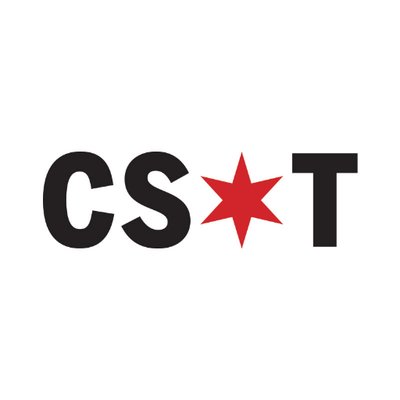



Bears general manager Ryan Poles had nearly twice as much salary cap space as any other team in the NFL entering free agency. And he had four of the top 64 picks in the NFL Draft.
And yet, when the draft ended Saturday night, a Bears team that had the fewest sacks in the NFL last season (20) heads into the next phase of the offseason with DeMarcus Walker, Trevis Gipson and Dominique Robinson as its edge-rushing rotation, with former Viking Jalyn Holmes and former Ram Terrell Lewis as its only other defensive ends with NFL experience.
What’s the deal with that?
“You want to fix everything immediately, but it’s got to work the right way,” Poles said after the Bears did not use any of their 10 draft picks on a defensive end. “The right players got to be there that fit our scheme. So we can’t fix everything at a high level in one swoop.”
Poles indeed had so many holes to fill this offseason, it was obvious he wasn’t going to be able to fill all of them with certainty. But to come out of the draft without a bigger upgrade at defensive end than Walker — a rotational player who had seven sacks with the Titans last season — was a little disconcerting.
In fairness, free agency was an unlikely avenue to solve the problem. The top pass rusher was Dre’Mont Jones, who had 6.5 sacks for the Broncos last season and was rewarded with a three-year, $51 million contract with Seahawks. Zach Allen, who had 5.5 sacks for the Cardinals last year, signed a three-year, 47.8 million contract with the Broncos. It’s not like the Bears had a chance to sign Nick Bosa or Myles Garrett.
In the draft, the only way Poles was going to get Alabama’s Will Anderson was to keep the No. 1 pick or trade no lower than No. 2 and the haul Poles received from the Panthers to drop to No. 9 was just too good to pass up. Can’t blame him for that.
The surprise was that Poles passed on a defensive end with his next seven picks — in the second round (No. 53 and No. 56), the third round (No. 64), or the fourth round (No. 115 and No. 133). Or even the fifth round (No. 148 and No. 165). Not even a Dominique Robinson fifth-round flyer this time. Maybe next year. It will probably end up being a good thing that Poles is being so patient with this rebuild — refusing to panic or overpay to accelerate the process.
“We are aware of our strengths and weaknesses and we’re going to be opportunistic,” Poles said. “That’s why we’ve done what we’ve done and we still have flexibility to do what we need to do to improve in different areas.
“And if [edge rusher is] the area that we improve moving forward, we do. If that opportunity doesn’t open up, then we’ll just continue to do what we’re doing. But there’s also drafts next year and we’ve set ourselves up nicely for that, too.”
Now what? Poles wouldn’t say he’s good with the current group of edge rushers heading into training camp. “Camp’s a long ways away. We’ll stay on our toes and if something presents itself, we’ll be able to do that. We’ll be able to do that financially as well.”
Indeed, the Bears still have $36.7 million in salary cap space — the most in the NFL — per spotrac.com. But the opportunities to splurge cost-efficiently will be rare — with former Jaguar defensive end Yannick Ngakoue heading a short list. Ngakoue had 9.5 sacks for the Colts last year after getting 10 for the Raiders in 2021 — and he’s still 28.
Most of the other possibilities are come with significant risk, including Commanders former No. 2 overall pick and defensive rookie of the year Chase Young, who could be available in a trade after the Commanders declined his fifth-year option. The Jets’ Carl Lawson, a possible cap casualty, would be an upgrade after a 2022 (seven sacks, 24 quarterback hits) coming off an Achilles injury.
But don’t be surprised if Poles doesn’t go crazy. The Bears fortified their interior in the draft with Florida’s Gervon Dexter in the second round (No. 53), South Carolina’s Zacch Pickens in the third round (No. 64) and Kennesaw State’s Travis Bell in the seventh round (No. 218). They will compete for time with veterans Justin Jones and Andrew Billings.
While the edge guys are the marquee pass rushers on most NFL teams, Poles argues the interior guys can make it easier for the edge rushers.
“They’re multipliers. They punch the pocket, they dent the pocket,” Poles said. “That makes it a shorter edge for the outside guys.”
That’s kind of how it worked in Eberflus’ defense when he was the Colts’ defensive coordinator. For what it’s worth, the Colts were 10th, ninth and ninth in points allowed when defensive tackles Denico Autry (2018) and DeForest Buckner (2020-21) led them in sacks. (When free agent Justin Houston led the Colts with 11 sacks in 2019, the Colts were 18th.)
“Quarterbacks for the most part aren’t as tall, so their sight-lines are a little bit less than they used to be,” Eberflus explained. “So I really believe when you have a guy who can dent the pocket from the inside, I really think the pressure is felt right away, because they’re closer to the quarterback. And I think that frees up the guys, gives them one-on-ones on the outside when you have two guys there that can really do that.”
In April, that’ll fly. But come September, we’ll have to see it to believe it.
